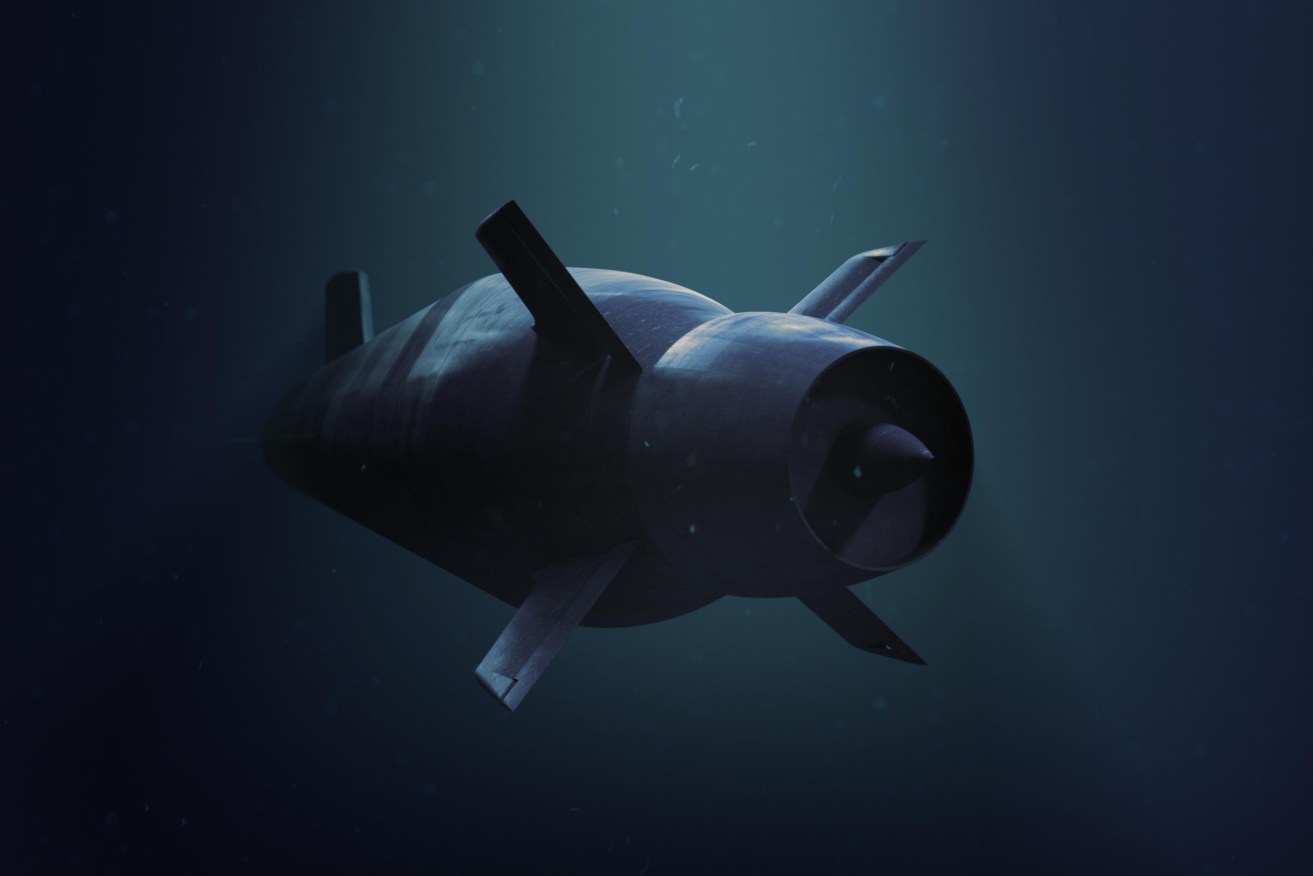Submarines: the $50 billion question that can’t be answered
Fifty billion dollars could fund the national disability insurance scheme for a couple of years, pay for hospitals, schools, thousands of kilometres of new roads, fix the Great Barrier Reef – or buy a dozen French submarines.

The French Shortfin Barracuda submarine. Photo: AAP/DCNS Group
You can triple that for lifetime ownership costs.
It’s a vast sum, which prompted immediate commentary on how it could be better spent on almost anything else, even though the anything else would not contribute to Australia’s security in an increasingly challenging region.
It’s a figure which requires some qualification.
The new Defence Integrated Investment Plan actually indicates a price tag of “>$50bn”. In other words, it could be more.
That’s to be spent between 2018 and 2057, averaging a sightly more reasonable-sounding $1.3 billion a year.
This ballpark figure still exceeds earlier estimates, such as $36 billion cited by the Australian Strategic Policy Institute through extrapolation of historical costs. That was dismissed as excessive by a number of experts.
ASPI analyst Andrew Davies reckons around $30 billion for procurement sounds right.
The French company which won the subs build isn’t saying what it bid.
DCNS Australia chief executive Sean Costello says that remains commercial in confidence.
But German shipbuilder TKMS, which along with Japan lost out to DCNS, said it would build a dozen Type-216 subs in Australia for $20 billion – suggesting the DCNS price tag wasn’t hugely different.
That build cost doesn’t include the preferred US combat system and weapons, or the cost of integrating this extremely complex technology into a vessel where it’s never been fitted before. Figure another couple of billion.
The government has one more crucial decision to make – which of US firms Raytheon or Lockheed Martin will be submarine systems integrator.
Costello wants to know soon so they can get on with the job.
“We need them. They are incredibly important in this story. The politics is all focused on the international designer but the American partner is just as important,” he said.
Before any work is done in Australia, DCNS needs a factory.
Its artist impressions depict a series of new buildings, including an assembly hall larger than the Adelaide Oval, located adjacent to existing ASC facilities at Techport, outside Adelaide.
Considering submarine design work will take a few more years and metal won’t be cut until after 2020, this major construction project will be the first tangible sign of vast spending ahead and the local work it will produce.
Just why DCNS won Australia’s biggest ever procurement deal hasn’t been fully explained and because of numerous sensitivities, won’t be for some time.
Prime Minister Malcolm Turnbull said DCNS was best able to meet Australia’s unique requirements.
Davies reckons Australia was in the fortunate position of having three credible bidders, all able to build suitable submarines.
The Japan bid offered the best strategic benefit and was certainly the preferred US solution; Germany had industrial advantages; while France had technical advantages.
France’s first Barracuda nuclear attack sub will be launched next year. So the hull for Australia’s Shortfin Barracuda actually exists in the required size. Engineering challenges to convert a nuke to a conventional boat were manageable.
Barracuda’s advanced pump jet technology is in use on France’s Triomphant-class ballistic missile subs.
In their bids, Germany offered advanced an air-independent propulsion system and Japan offered lithium batteries, promising technology which could substantially increase range and endurance.
Lithium batteries will be fitted to Soryu subs made after 2015, though some experts believe they haven’t been proven safe for submarine use.
France offered entirely familiar and proven lead-acid batteries for its sub.
Davies says the French technology was judged a better starting point.
Australia has learned much from construction of six Collins class submarines between 1990 and 2003, a project marked by numerous problems requiring lengthy remediation.
High among those problems were early decisions to use orphan technology, including unreliable Hedemora diesel engines and an Australian-developed computer combat system which never worked properly and eventually required replacement.
ASPI analyst Mark Thomson says this time round we won’t be doing a science experiment.
“We have learned in the past the further you deviate from established technologies, the more risk you are going to shoulder downstream, the more costs and schedule slippage you are going to have to suffer,” he said.
Now the winner has being announced, there is the issue of what to do with government-owned shipbuilder ASC.
Once the Australian Submarine Corporation, founded in 1985 to build Collins subs, it is now wholly government-owned and long-slated for privatisation.
ASC conducts maintenance of Collins subs and is senior partner in the alliance constructing the three air warfare destroyers.
Last year the company actually turned a $21.9 million profit, showing it’s performing far better than late 2014 when a frustrated defence minister David Johnston told parliament he wouldn’t trust it to build a canoe.
There appears to be a number of suitors, among them West Australian shipbuilder Austal and BAE Systems of Melbourne.
“The future of ASC is really up in the air. What they might end up doing is splitting it into pieces and selling the pieces individually,” Davies said.
That would create separate entities to maintain submarines and to construct submarines and surface ships, all with assured income for decades.
“Given the future cashflows that are now locked in, I wouldn’t rule out the big end of town having an interest in owning a shipyard,” he said.
Or there could be DCNS.
“We will explore the program and we will have a chat privately about the right commercial framework to work together in that partnership,” Costello said.
AAP




